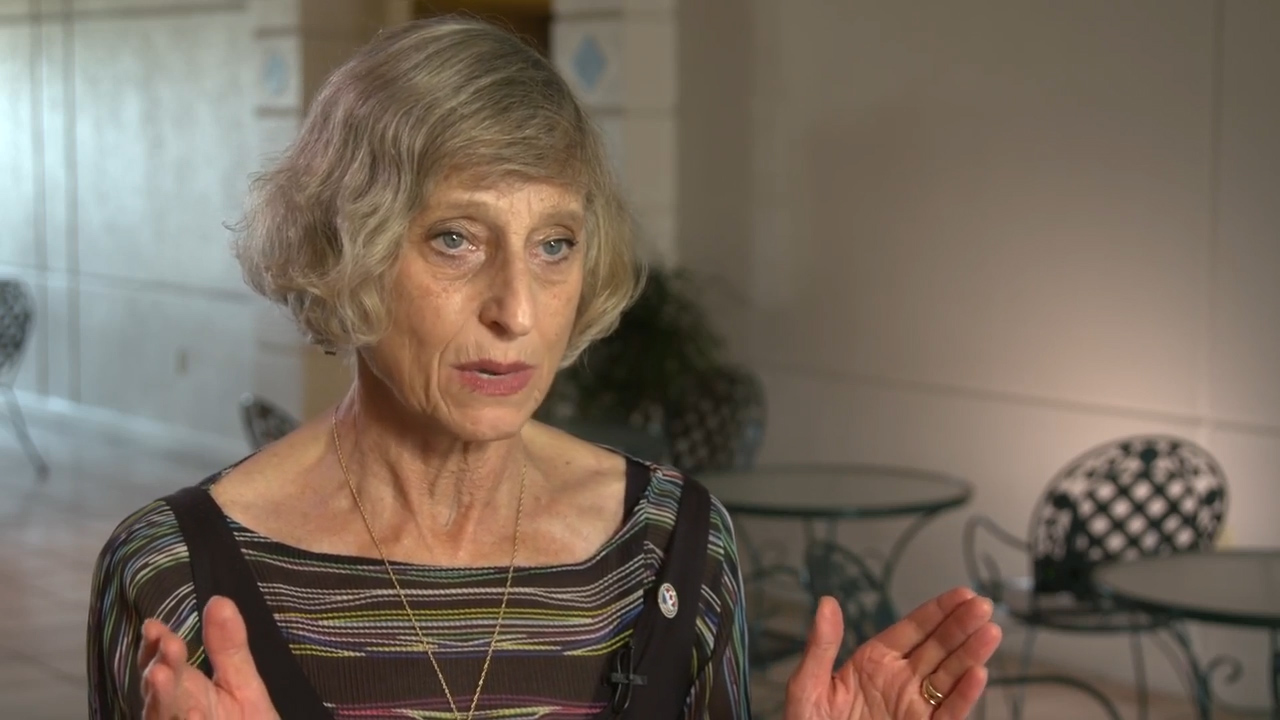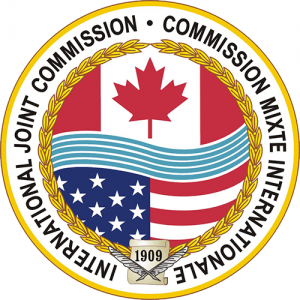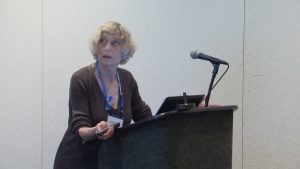
An interview with IJC’s Lana Pollack
The International Joint Commission has just released its First Triennial Assessment of Progress under the 2012 Great Lakes Water Quality Agreement. The biggest issues the report takes on: drinking water infrastructure, reducing nutrient runoff and controlling releases of chemicals of mutual concern.

International Joint Commission
Though the IJC commends the U.S. and Canada for progress in cleaning up contaminated Areas of Concern, it asks for tougher methods to reduce harmful algal blooms and calls for achieving human health objectives for drinkable, swimmable and fishable waters. The report also recommends that both governments set an accelerated and fixed period of time for achieving zero discharge of untreated sewage into the Great Lakes.
And it calls for more help from the Federal Government to improve infrastructure in preparation for problems caused by climate change.
We talked with Chair of the U.S. Section of the IJC Lana Pollack to get her take on some of the highlights of this first-ever report that was three years in the making. Here are some excerpts from our interview:
GLB: First, explain more about the IJC.
LP: The IJC was established under a treaty by Canada and the U.S. in 1909. The boundary waters treaty established a commission of 3 American and 3 Canadian appointees to help the two governments avoid disputes involving their shared waters. 43 percent of the boundaries are water. There are more than 350 different bodies of water in all, and the biggest, most magnificent and complex are the Great Lakes.
GLB: This new report is the first of its kind, correct?
LP: The Great Lakes Water Quality Agreement between Canada and the U.S. was revised in 2012. It charges the IJC with gathering an assessment every three years. We looked at what the governments have done, we looked at the government’s reports, we listened to the public. Then we say, ‘Have we done what we’ve promised to do under the Great Lakes Water Quality Agreement?” In the past and older iterations of the agreement from the early 70’s, we asked the IJC to write reports every 2 years. This is the first triannual assessment. It’s important. It’s broader and deeper, and we’ve had more time to work on it. We’re looking at all the data from all the agencies in both countries and we’ve also listened to the public and we are reflecting the public’s concerns.
GLB: When Detroit Public Television’s Great Lakes Bureau covered some of the public meetings held by the IJC across the Great Lakes Region for this report, it was often standing room only. Are you seeing a growing interest in the health of the Great Lakes?
LP: There has traditionally been a lot of concern about the Great Lakes. People love the lakes and they don’t want to see them threatened. We see a special interest here in Michigan without regard to age or politics or gender. We’ve had active public listening sessions in Toronto and St. Catherines in Ontario; Milwaukee, Detroit, Toledo, Sarnia, Sault Ste. Marie, and Buffalo. We also received a lot of input electronically and through the mail. We talked with people personally, and we talked with scientists throughout the Great Lakes Region, too. You can find all the responses in the final assessment (note: see link at the bottom of this page)
GLB: What are the some of the biggest concerns unearthed in this report?

Lana Pollack at the 2016 Great Lakes Public Forum, courtesy of Great Lakes Bureau
LP: First, I want to explain: this report is based on a very high minded and well-written agreement. The agreement itself that was signed by both governments in 2012 is excellent. It commits to safe drinking water. It commits to cleaning up Lake Erie and reducing and eliminating chemicals that are harmful to human health. It commits to drinkable, fishable and swimmable waters. It’s an ambitious commitment. Both governments have set up a system of checking in with each other on a high level every six months, with their specific goals to protect the lakes. And they’ve made good progress, especially where groundwater and wetlands are concerned. But here are the problems: they need to do a better job of measuring how well the two governments are doing at protecting public health. Take drinking water, take beaches that are closed, take fish that you can’t eat on a regular basis. There is still a way to go, and we point that out. We also point out that there are still places where raw sewage is being dumped into the Great Lakes, especially after big rain storms. Infrastructure in Canada and the U.S. are not sufficient to handle waste water run off when there are big storms, and we know that with climate change there will be increasing numbers of precipitation and storm events. We are calling on governments in the U.S. and Canada to step up at the federal level to support local municipalities that have been left holding the bag to try to keep up with infrastructure needs created by the changing climate. Governments at the federal level need to do more.
GLB: Chemicals of mutual concern are also a big factor in this assessment.
LP: Both governments need to do a better job of identifying chemicals of mutual concern and create programs to eliminate or reduce them. These are chemicals that are known to be harmful to human health. It’s still a very short list when we know there are many more that need to be addressed. We call for something called ‘extended producer responsibility.’ It’s a principle that says if you make something that goes into a product and that product ends up going into the lakes and contaminating the lakes, you have a liability. If you created the product, you can’t just say ‘we didn’t have anything to do with that’ when there are harmful results. We see that there are places where there are mandatory take-back programs involving things like ink cartridges and electronic products. The whole idea is to keep the products from breaking down and contaminating the lakes, the drinking water, and the places we swim.
GLB: The report also addresses harmful algal blooms and you ask the state of Ohio to take specific action.

Lana Pollack at the 2016 Great Lakes Public Forum, courtesy of Great Lakes Bureau
LP: We credit the U.S. government for funding the Great Lakes Restoration Initiative over the last decade with 300 million dollars a year, and we call on the Federal Government to continue that funding. But we also believe the state of Ohio could do more by declaring the waters of Lake Erie impaired. That’s a technical term that would enable the Federal Government to come in and do a better job of focusing on farm fields and the bad actors that are contributing to the run-off and excessive pollution that are causing harmful algal blooms.
GLB: What about invasive species?
LP: We address invasive species, and not just the Asian Carp. We are calling for both governments to conduct a risk assessment not only of invasive species affecting the waters of the Great Lakes, but also land-based plants like Phragmites. We are also asking for a risk assessment from both governments involving the overall effects of climate change so people know what the most vulnerable places and practices are, and who is going to be hurt by climate change, and so communities can prepare in a comprehensive and coordinated fashion with the best science available. And then finally we call on governments to be more open in engaging the public early in their programs and practices, including involving indigenous peoples who bring special knowledge to the table. Let’s not be afraid of opening up the government’s process a little more and being more transparent and getting more public input. The public often has the best ideas because they’re closest to what the problems are in the first place.
To view the full First Great Lakes Triennial Assessment of Progress report under the Great Lakes Water Quality Agreement go to First Triennial Assessment of Progress




